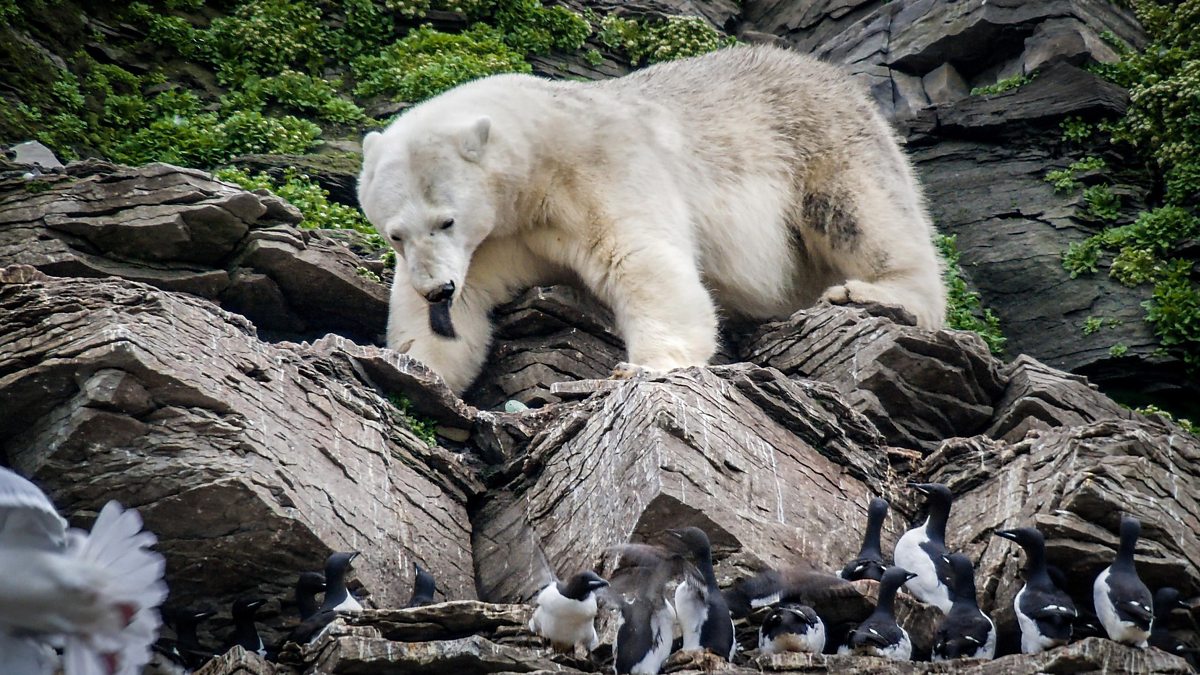

A male polar bear jumping in the pack ice, its movement frozen in the middle of the jump in Spitsbergen, Svalbard, Norway. Their fur is translucent, with a hollow core, and appears white because it reflects visible light, which means they are camouflaged amongst the snow and ice.

Are polar bears predators skin#
What colour are polar bears?Īlthough polar bears make look white, their skin is actually black. Hybrids between polar bears and grizzly bears (a subspecies of brown bear) have been known to occur, usually called ‘pizzly bears’. In Russia the polar bear is called beliy medved meaning the white bear, while in Norway and Denmark, the polar bear is called isbjorn, meaning ice bear. The Inuit people of the Canadian Artic call the polar bear nanuq, an animal worthy of great respect. © Paul Souders/Getty Are there any other names for polar bears? arctos), including grizzly bearsĪ swimming polar bear in Canada, Nunavut Territory. Because of this, they are classified as marine mammals – and are the only bear species classified like this.īears are mammals in the Ursidae family, which consists of eight species: Polar bears spend their lives on the sea ice, hunting in the ocean and on the ice for food. The scientific name of the polar bear is Ursus maritimus, which translates to ‘sea bear’. What is the scientific name of the polar bear? They mainly hunt bearded and ringed seals, but have been known to occasionally attempt to catch walruses (the world's largest seal species), as well as scavenging on dead animal carcasses such as whales and on garage at human settlements. These fearsome predators are both the world's largest bear species, and the world's largest land carnivore. Polar bears are iconic mammals of the Arctic, often featuring in natural history documentaries and childrens books, as well as heart-breaking campaigns about the effects of climate change on threatened species due to their reliance on dwindling sea ice.

Near human settlements, they often acquire a taste for garbage, bringing bears and humans into perilous proximity.Polar bear guide: where they're found, what they eat, and why they're threatened Polar bears are attractive and appealing, but they are powerful predators that do not typically fear humans, which can make them dangerous. In fact, male polar bears may even kill young of their species. Females aggressively protect their young, but receive no help from their solitary male mates. Young cubs live with their mothers for some 28 months to learn the survival skills of the far north. They give birth in winter, usually to twins. Breeding and Behaviorįemales den by digging into deep snow drifts, which provide protection and insulation from the Arctic elements. These Arctic giants are the masters of their environment and have no natural enemies. If the opportunity presents itself, polar bears will also consume carcasses, such as those of dead whales. They also stalk ice edges and breathing holes.

In search of this quarry they frequent areas of shifting, cracking ice where seals may surface to breathe air. These powerful predators typically prey on seals. But under their fur, polar bears have black skin-the better to soak in the sun's warming rays. The bear's stark white coat provides camouflage in surrounding snow and ice. Fur even grows on the bottom of their paws, which protects against cold surfaces and provides a good grip on ice. Polar bears live in one of the planet's coldest environments and depend on a thick coat of insulated fur, which covers a warming layer of fat. Some polar bears have been seen swimming hundreds of miles from land-though they probably cover most of that distance by floating on sheets of ice. They are very strong swimmers, and their large front paws, which they use to paddle, are slightly webbed. Polar bears roam the Arctic ice sheets and swim in that region's coastal waters.


 0 kommentar(er)
0 kommentar(er)
